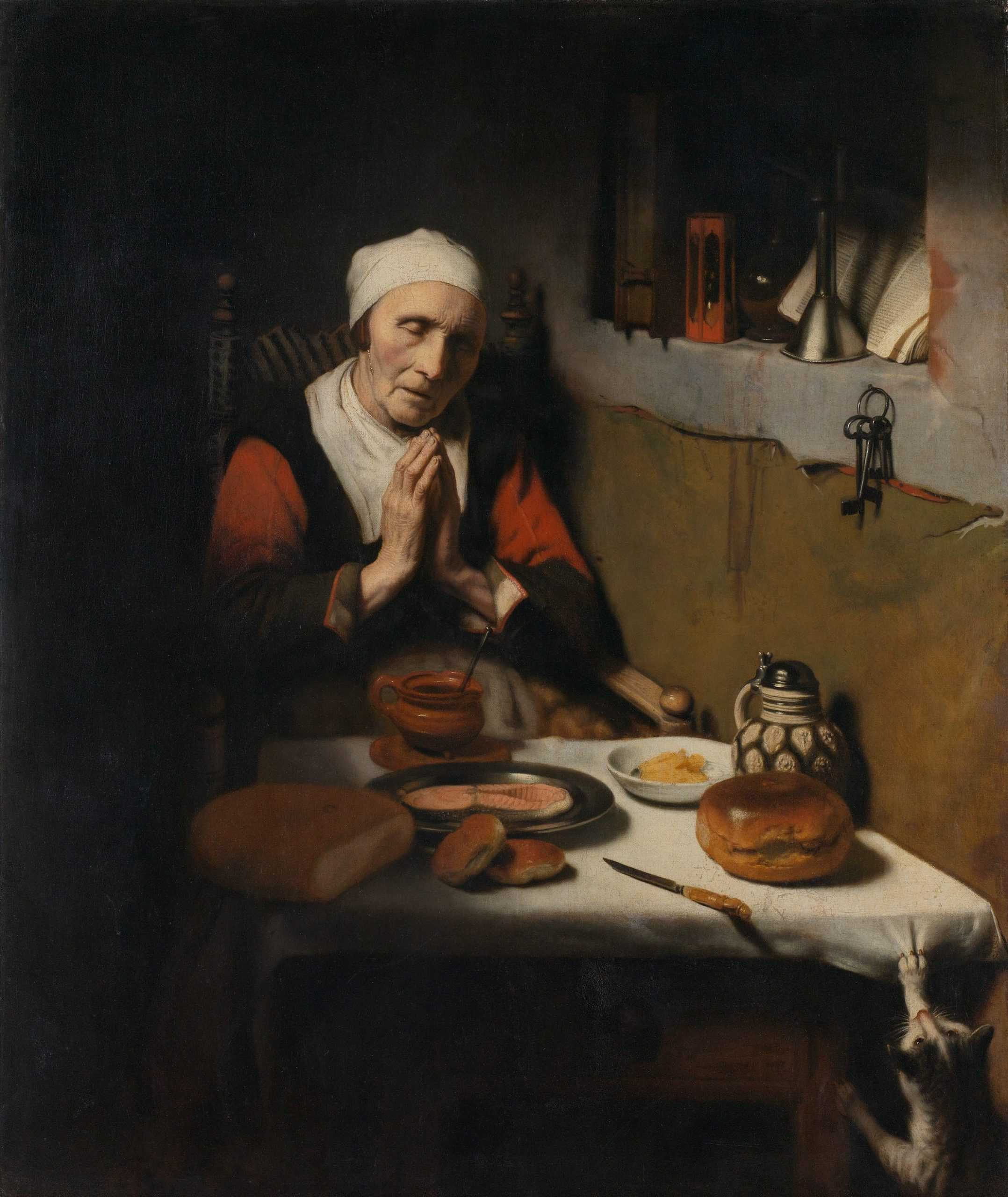What are Compulsions in OCD?

Step into the intriguing world of OCD compulsions, where the mind becomes both a captor and a captive. Imagine a relentless dance between obsessions and the irresistible urge to perform seemingly irrational rituals. From meticulously arranging objects to seeking constant reassurance, these compulsions create a complex tapestry that consumes individuals’ thoughts, emotions, and actions.
Are you ready to unravel the enigma of these compulsions, where ordinary tasks become extraordinary quests for certainty and control?
Join us as we journey into the depths of OCD compulsions, where the boundaries between order and chaos blur, and the quest for peace intertwines with the struggle against the relentless grip of obsession. Prepare to be captivated as we explore the intricacies, impact, and underlying psychology of OCD compulsions.
Get ready to embark on a compelling journey that will challenge your understanding and leave you in awe of the human mind’s extraordinary complexities. Are you ready to unlock the door to the captivating world of OCD compulsions? Let’s take the first step together.
“One, two, three
I think they call it OCD
Eleven fifty-nine
Fear freezes me in time
Say these words just right
And maybe you’ll win the fight”
–Lidia Longorio
This post is all about Compulsions In OCD.

Ready to reclaim your life, one fearless step at a time? Your personalized path to anxiety-free living starts now!
Unlock your extraordinary future with PanicAway!
Don’t let anxiety define your story. Choose PanicAway, and step into a world bursting with limitless opportunities and unshakable self-assurance. Your personalized path to an extraordinary life is right here!
Meet PanicAway: Your Personal Roadmap to Liberation from Anxiety
Tired of letting anxiety steal the best moments of your life? It’s time to take charge and embrace a world filled with possibilities, free from fear and panic.
Why PanicAway is Your Perfect Ally in this Journey:
- Immediate Relief: Imagine those sleepless nights and crippling panic attacks becoming distant memories. PanicAway arms you with techniques for instant anxiety relief, putting you back in control.
- Empowerment from Within: It’s not about just managing anxiety; it’s about conquering it at its core. Rediscover your inner strength and emerge as a fearless, empowered version of yourself.
- Reclaim Your Freedom: Visualize a life where anxiety no longer dictates your choices. With PanicAway, you’ll savor the freedom to chase your dreams, explore the world, and seize every opportunity with unwavering confidence.
- Proven Success Stories: Join the community of individuals who’ve transformed their lives with PanicAway. You can be the next success story, and we can’t wait to celebrate your triumph!
- Comprehensive Support: You gain access to a treasure trove of resources, from life-changing e-books to enlightening audio guides. Plus, connect with kindred spirits on their own journeys to overcome anxiety.
Download your FREE copy of our OCD Worksheets now!
What Are OCD Compulsions?
Compulsions in OCD (Obsessive-Compulsive Disorder) are repetitive behaviors or mental acts that individuals feel compelled to perform in response to their obsessions. Compulsions are aimed at preventing or reducing distress, anxiety, or perceived harm associated with obsessions.
Here are some important aspects of compulsions in OCD:
Function
Compulsions are typically performed to neutralize or alleviate the anxiety or distress caused by obsessions. Individuals believe that by engaging in these repetitive behaviors, they can prevent a feared event, reduce the intensity of their obsessions, or maintain a sense of control.
Relationship with Obsessions
Compulsions are directly linked to obsessions. Obsessions are intrusive, unwanted thoughts, images, or urges that repeatedly occur in an individual’s mind. Compulsions develop as a response to these obsessions, serving as a coping mechanism or attempt to neutralize the distress associated with them.
Types of Compulsions
Compulsions can be categorized into two main types: overt and covert. a. Overt Compulsions: These are observable behaviors that people with OCD engage in. Common overt compulsions include excessive hand washing, repetitive checking (e.g., checking if doors are locked), arranging objects in a specific order, or seeking reassurance from others.
Covert Compulsions: Also known as mental rituals, these are less visible and involve mental activities. Examples include mentally counting, repeating certain words or phrases, praying, or mentally reviewing past events.
Temporary Relief
Engaging in compulsions provides temporary relief from the anxiety, distress, or discomfort associated with obsessions. However, this relief is short-lived, and the anxiety tends to return, perpetuating the cycle of obsessive thoughts and compulsive behaviors.
Avoidance and Safety Behaviors
In addition to compulsions, individuals with OCD often develop avoidance behaviors and safety-seeking strategies. They may avoid situations, places, or people that trigger their obsessions or engage in behaviors to minimize perceived risks. These behaviors serve as a way to manage anxiety or prevent the occurrence of obsessions.
Ritualistic Nature
Compulsions often follow specific rules, sequences, or rituals that individuals feel compelled to perform. These rituals provide a sense of structure, order, or symmetry, and deviating from them can result in heightened anxiety or distress.
Interference and Time Consumption
Compulsions can significantly interfere with an individual’s daily life, functioning, and relationships. They can be time-consuming, consuming hours each day, and may lead to difficulties in completing tasks or meeting responsibilities.
Negative Reinforcement
The temporary relief obtained from compulsions reinforces the belief that the behavior is necessary to alleviate anxiety or prevent harm. This strengthens the association between the obsessions and the need to engage in compulsive behaviors, perpetuating the cycle of OCD.
Paradoxical Effects
Paradoxically, engaging in compulsions tends to maintain or worsen OCD symptoms instead of alleviating them. By giving in to compulsions, individuals reinforce the notion that their obsessions are threatening and that the compulsions are the only solution, thus strengthening the cycle of obsessions and compulsions.
Treatment
Effective treatment for OCD typically involves a combination of psychotherapy and, in some cases, medication. Cognitive-Behavioral Therapy (CBT) with a specific technique called Exposure and Response Prevention (ERP) is the gold standard treatment for OCD.
ERP involves gradually exposing individuals to their obsessions while refraining from engaging in the corresponding compulsions. This helps individuals learn to tolerate anxiety and break the cycle of obsessions and compulsions.
Understanding compulsions is crucial for the diagnosis and treatment of OCD. By addressing and challenging compulsive behaviors, individuals with OCD can work towards
Causes of OCD compulsions
The exact causes of OCD compulsions are not fully understood. However, research suggests that a combination of genetic, neurobiological, and environmental factors contribute to the development of OCD and its associated compulsions.
Here are some factors that are believed to play a role:
Genetic factors
There is evidence to suggest that OCD can run in families, indicating a genetic component. Certain genes may be involved in regulating brain function and neurotransmitters associated with OCD, making some individuals more susceptible to developing the disorder.
Neurobiological factors
Imbalances in neurotransmitters, such as serotonin, dopamine, and glutamate, are thought to play a role in OCD. These imbalances affect communication between brain regions involved in decision-making, fear response, and habit formation, leading to the development of compulsive behaviors.
Brain abnormalities
Structural and functional abnormalities in specific brain areas, including the orbitofrontal cortex, caudate nucleus, and anterior cingulate cortex, have been observed in individuals with OCD. These abnormalities contribute to difficulties in processing information, regulating emotions, and inhibiting repetitive behaviors.
Environmental factors
Certain environmental factors, such as childhood trauma, stressful life events, or infections, may trigger or exacerbate OCD symptoms in individuals who are already predisposed to the disorder. These factors can interact with genetic and neurobiological vulnerabilities, further influencing the development of OCD compulsions.
Psychological factors, such as cognitive biases and maladaptive beliefs about intrusive thoughts, also play a role in the maintenance of OCD compulsions. It’s important to note that the causes of OCD are complex and multifaceted, and further research is needed to fully understand the underlying mechanisms involved.
Types of OCD Compulsions
Here are several types of compulsions commonly observed in OCD
Cleaning and Washing Compulsions
Cleaning and washing compulsions involve excessive and repetitive behaviors aimed at eliminating perceived contamination or preventing harm. Individuals may excessively wash their hands, take prolonged showers, or clean their surroundings excessively to alleviate anxiety related to germs, dirt, or contamination fears.
These compulsions may involve using specific rituals or techniques, such as washing in a particular order or for a specific duration. Individuals may feel a temporary sense of relief from anxiety after performing these cleaning behaviors, but the relief is short-lived and the compulsion often needs to be repeated.
Examples of Cleaning and Washing Compulsions
- Excessive hand washing: Repeatedly washing hands for extended periods, using excessive soap or sanitizer, and feeling compelled to wash even when hands are already clean.
- Excessive cleaning of surfaces: Frequently disinfecting surfaces, such as doorknobs, countertops, or personal belongings, even when there is no objective need for it.
- Ritualized showering: Spending excessive time in the shower, using specific patterns or rituals while washing, and feeling the need to shower multiple times a day to eliminate perceived contamination.
- Excessive laundering: Repeatedly washing clothes or other items, sometimes without a valid reason, and feeling compelled to wash them again and again until a sense of cleanliness is achieved.
- Avoiding “contaminated” objects: Avoiding objects or places perceived as contaminated, such as public restrooms, dirty surfaces, or items touched by others.
Checking Compulsions
Checking compulsions involve repetitive behaviors aimed at ensuring safety or preventing harm. Individuals may repeatedly check doors, windows, appliances, or other objects to ensure they are locked, turned off, or functioning properly. Checking compulsions may also involve reviewing or re-reading written work, documents, or emails to ensure accuracy or prevent errors.
Individuals may feel a strong urge to perform these checking behaviors, even if they logically know that everything is in order. The fear of negative consequences or catastrophic events drives the need for repeated checking.
Examples of Checking Compulsions
- Checking locks: Constantly verifying that doors, windows, or other entry points are locked and secure, often going back to check multiple times.
- Checking appliances: Repeatedly checking stoves, ovens, or electrical devices to ensure they are turned off, even after confirming their status.
- Checking personal belongings: Continuously examining personal items, such as wallets, bags, or keys, to ensure they are present and accounted for.
- Checking for mistakes: Repeatedly reviewing work, emails, or text messages to confirm there are no errors or potential negative consequences.
- Checking for physical symptoms: Frequent body checks or medical examinations to confirm the absence of illness or signs of physical harm.
Counting and Repeating Compulsions
Counting and repeating compulsions involve engaging in repetitive counting, tapping, or uttering certain words or phrases. Individuals may feel compelled to count objects or perform actions a specific number of times to reduce anxiety or prevent harm.
This type of compulsion often includes repetitive mental counting or repeating specific words silently. Individuals may believe that performing these actions will ward off harm, neutralize obsessions, or restore a sense of balance. The compulsion provides temporary relief but perpetuates the cycle of OCD.
Examples of Counting and Repeating Compulsions
- Counting objects: Feeling compelled to count objects around them, such as steps, tiles, or items on a shelf, often repeating the count multiple times.
- Symmetry and alignment: Needing to arrange objects symmetrically or align them precisely, ensuring everything is in perfect order.
- Organizing rituals: Establishing strict routines for arranging belongings, such as clothes, books, or items on a desk, following specific patterns or sequences.
- Repeating actions: Engaging in repetitive actions a certain number of times, such as turning a light switch on and off a specific number of times before leaving a room.
- Numerical rituals: Performing activities in specific numerical patterns or sequences, such as taking a certain number of steps or repeating phrases a specific number of times.
Ordering and Arranging Compulsions
Ordering and arranging compulsions involve arranging objects or aligning items in a specific manner to achieve a sense of symmetry, exactness, or perfection. Individuals may feel driven to arrange books, items on shelves, or objects on their desk in a particular order or pattern.
Deviation from the established order can trigger distress and anxiety. These compulsions are performed to reduce discomfort and create a sense of control or harmony. However, the need for orderliness and perfection becomes consuming and time-consuming, interfering with daily functioning.
Examples of Ordering and Arranging Compulsions
- Symmetrical Alignment: Arranging objects perfectly symmetrically, ensuring they are equidistant or mirror each other.
- Color-Coded Organization: Sorting items based on a specific color scheme to achieve visual harmony and organization.
- Numerical Order: Sequencing objects or tasks according to numerical patterns or arranging them in ascending or descending order.
- Exactness and Precision: Aligning objects with meticulous accuracy, often using tools or measurements for precise placements.
- Compulsive Reordering: Constantly rearranging items, even if they are already arranged perfectly, due to a persistent need for order and control.
Hoarding Compulsions
Hoarding compulsions involve persistent difficulty discarding or parting with possessions, resulting in excessive accumulation and clutter. Individuals may feel an overwhelming need to save items that others would consider worthless or nonessential. Hoarding compulsions are driven by a fear of losing something important or experiencing distress if objects are discarded.
Individuals often experience strong emotional attachments to objects and have difficulty making decisions about what to keep or discard. The accumulation of possessions leads to significant clutter and functional impairment.
Examples of Hoarding Compulsions
- Excessive acquisition: Constantly acquiring and accumulating items, even if they have little or no value or serve no practical purpose.
- Difficulty discarding: Feeling extreme distress or anxiety when attempting to discard possessions, leading to an overwhelming need to keep items, even those with no practical use or significant clutter.
- Emotional attachment: Developing strong emotional attachments to objects, often attributing sentimental or personal value to them, making it challenging to let go.
- Storage or hoarding spaces: Filling up living spaces, closets, or storage areas to capacity with excessive amounts of belongings, making it difficult to navigate or use the space effectively.
- Perceived need for future usefulness: Holding onto items based on a belief that they may have future utility or value, leading to a fear of regret or loss if they are discarded.
Mental Rituals
Mental rituals, also known as covert compulsions, are mental activities individuals engage in to neutralize distressing thoughts or prevent feared outcomes. These rituals can include mental repetition of words or phrases, praying, or mentally reviewing past events to alleviate anxiety.
Mental rituals are often performed silently and go unnoticed by others. Individuals may rely on these rituals as a way to manage their obsessions internally. Although not observable, these mental rituals play a significant role in maintaining the cycle of OCD and can be challenging to overcome.
Examples of Mental Rituals
- Mental reviewing: Constantly reviewing past events, conversations, or situations in the mind to ensure nothing harmful or negative occurred.
- Mental counting or repeating: Repeating numbers or phrases silently in the mind to counteract intrusive thoughts or to achieve a sense of safety or control.
- Mental praying or reciting: Engaging in repeated prayers, mantras, or specific phrases silently in the mind as a way to ward off feared outcomes or intrusive thoughts.
- Mental rehearsal: Mentally rehearsing potential scenarios or actions repeatedly to prepare for feared situations or to prevent negative consequences.
- Mental erasing or neutralizing: Engaging in mental rituals or imagery to “erase” or neutralize intrusive or distressing thoughts, often through imagined cleansing or undoing actions.
Just-Right Compulsions
Just-right compulsions involve repetitive behaviors aimed at achieving a specific feeling of “rightness” or “completeness.” Individuals may feel an overwhelming urge to repeat activities until they achieve a subjective sense of satisfaction.
For example, a person may need to repeatedly open and close a door until it feels just right, or adjust the volume on the TV multiple times until it feels perfect. These behaviors are driven by an intense need for a specific sensory or emotional experience associated with the compulsion.
Examples of Just-Right Compulsions
- Door Closing: Repeatedly opening and closing doors until it feels “just right.”
- Volume Adjustment: Constantly adjusting the volume until it feels perfect or reaches a specific level.
- Arranging Objects: Meticulously arranging objects until they achieve a subjective sense of perfection or completeness.
- Body Positioning: Compulsively adjusting body posture or limb positions until it feels “just right.”
- Tactile Sensations: Repeatedly touching surfaces or objects until a desired tactile sensation is achieved.
Reassurance-Seeking Compulsions
Reassurance-seeking compulsions involve seeking reassurance from others to alleviate anxiety or doubt. Individuals may repeatedly ask others for reassurance about their thoughts, actions, or the accuracy of their perceptions.
his can manifest as repeatedly asking loved ones for confirmation, seeking opinions from multiple sources, or continuously seeking external validation. The compulsion provides temporary relief from doubt or uncertainty but reinforces the need for reassurance-seeking behaviors.
Examples of Reassurance-Seeking Compulsions
- Repeatedly Seeking Confirmation: Seeking constant reassurance from others about thoughts, actions, or decisions.
- Online Searching: Compulsively searching the internet for reassurance or information related to obsessions or fears.
- Constantly Checking with Professionals: Repeatedly consulting professionals to seek reassurance about health or specific concerns.
- Repeatedly Asking for Reassurance: Frequently asking the same questions to others for reassurance, even if reassurance has been received before.
- Repeatedly Checking Information: Compulsively reviewing past conversations, texts, or documents to seek reassurance or prevent errors.
Mental Reviewing Compulsions
Mental reviewing compulsions involve repeatedly reviewing past events, conversations, or actions in one’s mind to ensure that no harm was caused, mistakes were made, or that everything is in order. Individuals may analyze and dissect past situations to alleviate anxiety or uncertainty.
Mental reviewing can be time-consuming and intrusive, as individuals feel compelled to reevaluate and scrutinize their memories and actions. This compulsion is driven by the fear of negative consequences or the need to ensure everything is “just right.”
Examples of Mental Reviewing Compulsions
- Replay of Conversations: Repeatedly reviewing past conversations in the mind for reassurance.
- Recalling Actions: Going over past actions in the mind to ensure no harm was caused or mistakes were made.
- Revisiting Events: Mentally reliving past events to analyze actions and decisions.
- Imagining Scenarios: Repeatedly imagining hypothetical situations and assessing potential outcomes.
- Mental Rechecking: Continuously reviewing completed tasks in the mind to alleviate anxiety about errors.
Ritualized Touching or Tapping Compulsions
Ritualized touching or tapping compulsions involve repetitive physical contact with objects or body parts to alleviate anxiety or prevent harm. Individuals may feel compelled to touch or tap objects a specific number of times or in a particular sequence.
This can include touching surfaces, tapping body parts, or engaging in rhythmic patterns. The compulsion provides a sense of control and relief from anxiety, but the behavior can become time-consuming and interfere with daily functioning.
Examples of Ritualized Touching or Tapping Compulsions
- Tapping in Patterns: Compulsively tapping objects or surfaces in specific patterns or sequences.
- Touching for Symmetry: Feeling compelled to touch objects or body parts symmetrically.
- Repeated Touching: Compulsively touching objects or body parts a certain number of times.
- Touching for Safety: Touching objects or surfaces to seek reassurance or alleviate anxiety about safety or contamination.
- Sequential Touching: Engaging in a compulsion of sequentially touching objects or body parts in a specific order.
It’s important to note that these types of compulsions can coexist or overlap in individuals with OCD. The specific types and severity of compulsions can vary significantly, and an individual may engage in multiple types of compulsions to manage their obsessions and anxiety. Treatment, such as cognitive-behavioral therapy (CBT) and medication, can help individuals develop healthier coping mechanisms and reduce the impact of compulsions on their daily lives.
Checkout Our new OCD Y-BOCS Symptom Test!

How To Deal With Compulsions
Dealing with compulsions in OCD typically involves a combination of strategies, including therapy, self-help techniques, and, in some cases, medication.
Here are some approaches that can help individuals manage their OCD compulsions:
Cognitive-Behavioral Therapy (CBT):
CBT, particularly a specific form called Exposure and Response Prevention (ERP), is the most effective treatment for OCD. It involves gradually exposing oneself to anxiety-provoking situations or triggers while resisting the urge to engage in compulsive behaviors. This process helps individuals learn that their fears are unfounded and that they can tolerate anxiety without resorting to compulsions.
Mindfulness and Acceptance
Practicing mindfulness techniques can help individuals with OCD observe their thoughts and urges without judgment or acting on them. Acceptance of intrusive thoughts and discomfort can reduce the anxiety associated with the need to perform compulsions.
Delay and Gradual Reduction
Instead of giving in to compulsions immediately, individuals can delay their response for a set period of time. Over time, they can gradually reduce the frequency or intensity of the compulsions, challenging the belief that the compulsion is necessary.
Support Groups
Joining a support group for OCD can provide a sense of community and understanding. Sharing experiences and learning from others can be helpful in managing compulsions and gaining support.
Lifestyle Changes
Engaging in regular exercise, maintaining a balanced diet, getting enough sleep, and managing stress can contribute to overall well-being and reduce OCD symptoms.
Medication
In some cases, medication, such as selective serotonin reuptake inhibitors (SSRIs), may be prescribed to help manage OCD symptoms. It is important to consult with a healthcare professional for an accurate diagnosis and appropriate medication management.
Remember, overcoming compulsions takes time and persistence. It is recommended to seek professional help from a mental health specialist experienced in treating OCD to develop an individualized treatment plan.

Ready to reclaim your life, one fearless step at a time? Your personalized path to anxiety-free living starts now!
Unlock your extraordinary future with PanicAway!
Don’t let anxiety define your story. Choose PanicAway, and step into a world bursting with limitless opportunities and unshakable self-assurance. Your personalized path to an extraordinary life is right here!
Meet PanicAway: Your Personal Roadmap to Liberation from Anxiety
Tired of letting anxiety steal the best moments of your life? It’s time to take charge and embrace a world filled with possibilities, free from fear and panic.
Why PanicAway is Your Perfect Ally in this Journey:
- Immediate Relief: Imagine those sleepless nights and crippling panic attacks becoming distant memories. PanicAway arms you with techniques for instant anxiety relief, putting you back in control.
- Empowerment from Within: It’s not about just managing anxiety; it’s about conquering it at its core. Rediscover your inner strength and emerge as a fearless, empowered version of yourself.
- Reclaim Your Freedom: Visualize a life where anxiety no longer dictates your choices. With PanicAway, you’ll savor the freedom to chase your dreams, explore the world, and seize every opportunity with unwavering confidence.
- Proven Success Stories: Join the community of individuals who’ve transformed their lives with PanicAway. You can be the next success story, and we can’t wait to celebrate your triumph!
- Comprehensive Support: You gain access to a treasure trove of resources, from life-changing e-books to enlightening audio guides. Plus, connect with kindred spirits on their own journeys to overcome anxiety.
Conclusion
In conclusion, OCD compulsions manifest in various forms and can significantly impact the lives of individuals with the disorder. Whether it involves ordering and arranging, just-right behaviors, reassurance-seeking, mental reviewing, or ritualized touching and tapping, these repetitive behaviors serve as attempts to alleviate anxiety, attain a sense of control, or satisfy specific urges.
While these compulsions may provide temporary relief, they often contribute to a cycle of anxiety and interference with daily functioning. Understanding and addressing these compulsions through therapy and support can help individuals with OCD develop healthier coping strategies and improve their overall well-being.
This post was all about Compulsions In OCD.

4 Comments
Comments are closed.